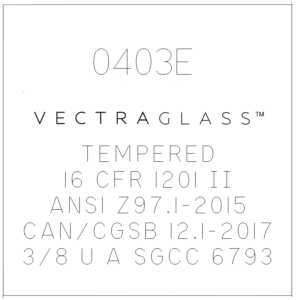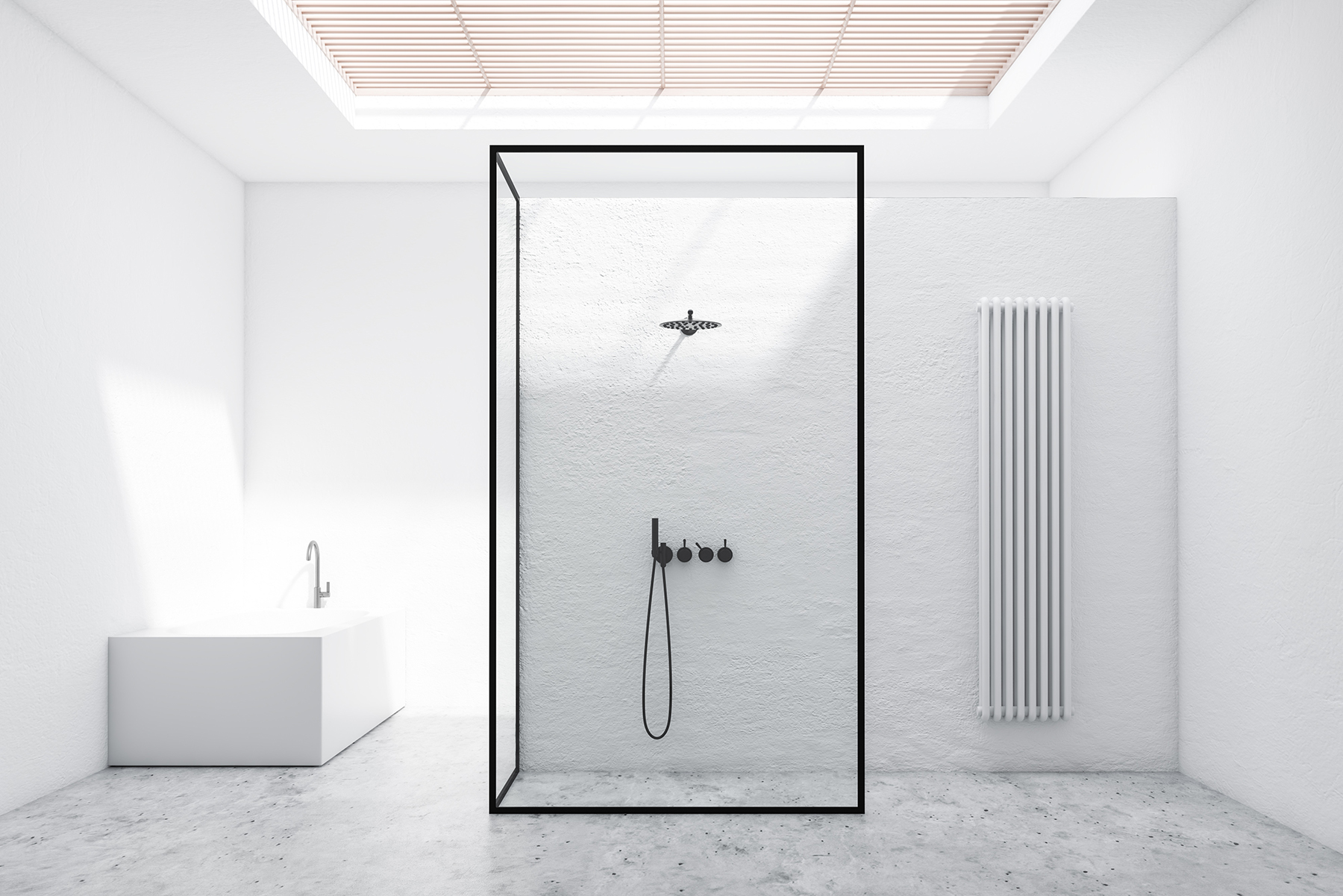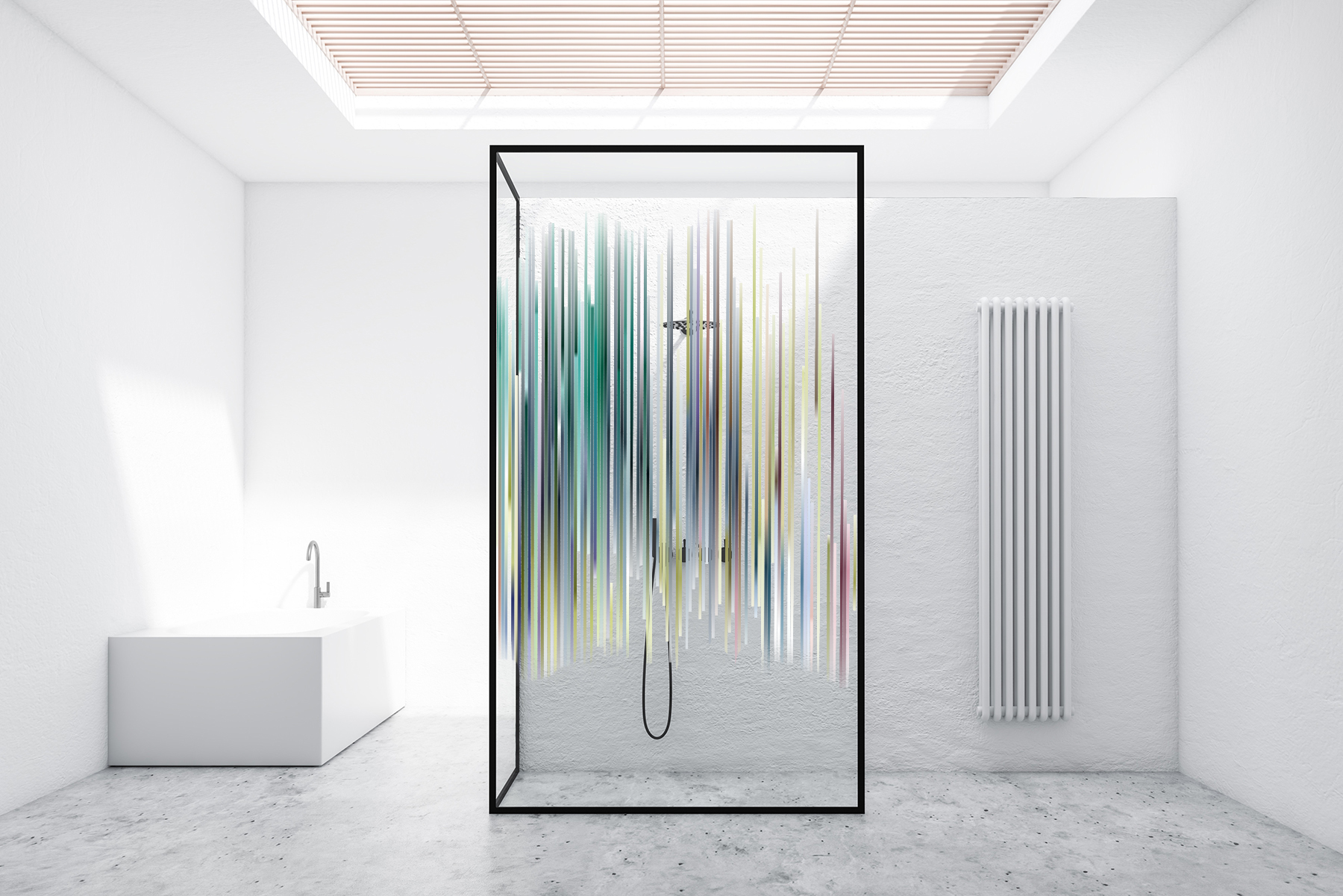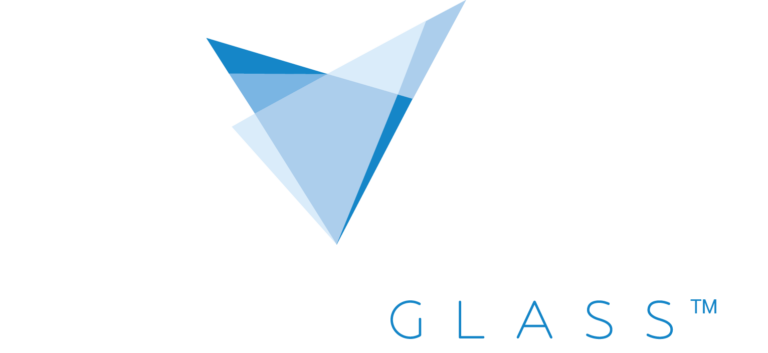Tempering
The perfect balance of safety and value.
Tempered glass reduces the potential for danger or injury if broken. This versatile and affordable material is a universal building code requirement for shower enclosures, windows, doors, walls, and many other commercial and residential applications.
Tempering is a thermal process that creates exterior compression and internal tension, resulting in a glass that is four to five times stronger than annealed glass. If breakage occurs, it crumbles into thousands of small chunks, rather than splintering into shards. At Vectra, all tempering is done in-house, which translates to savings and shortened delivery lead times for our customers.
| Tempering Specs | |
|---|---|
| max. width (in/m) | 84 in / 2134 mm |
| max. length (in/m) | 163 in / 4140 mm |
| min. diagonal dim. (in/mm) | 10 in / 250 mm |
| min surface compression | 10,000 psi |
| min edge compression | 9,700 psi |
| increased strength over annealed | 4 times greater |
| standard | ANSI Z97.1 |
Fast tempering facts and frequently asked questions:

Vectra’s tempered glass is SGCC Certified and has a safety logo which is permanently etched into the glass in compliance with federal regulations. Our current label, shown in the example above, has our Company Name [VECTRA GLASS TM], Type of Safety Glass [in this case, TEMPERED], the federal safety standard [Consumer Products Safety Commission number (CPSC) 16 CFR 1201 II], ANSI Code of Federal Regulations and Canadian National Building Code standards, Certified Thickness – “U”= Unlimited for flat glass, followed by the ANSI impact Class “A”, and our SGCC Number.
The Safety Glazing Certification Council (SGCC) is the largest independent third party that inspects and tests tempered glass to confirm that the manufacturing process of the product is the same as it was when tested. The SGCC is a voluntary organization which insures all manufacturers and fabricators are complying with the laws that govern these products. Satisfactory participation in the Council allows the etching of the SGCC logo permanently onto the glass as notification that the glass has been properly produced and is truly safety glass.
Vectra Glass has established internal quality standards with the goal of achieving very high-quality tempered glass. Within our manufacturing process is built-in hourly testing which monitors breakout patterns, compression levels and optical glass performance to ensure we are always in compliance to not only meet, but exceed federal specifications for both ASTM C1036 and C1048.
Please note: NO LOGO is possible under special conditions and must be discussed during the quote and ordering process.
The Vectra Glass team is skilled in manufacturing custom tempered glass that offers more tensile strength (bendability) and wind resistance. Federal safety glazing law requires the use of safety glass in defined hazardous locations. Interpretations of federal standards and requirements for safety architectural glass can vary by governing states and municipalities. In general, here are some of the areas and rules where the International Building Code requires the use of tempered glass:
- Glass façades and building envelope
- Architectural glass applications
- Commercial building entrance systems
- Bath and shower enclosures
- All doors – both interior and exterior, including sidelights and/or any glazing next to an opening for human passage
- Windows in bath and shower areas
- Any glazed panel greater than 9 ft.² (0.8 m²)
- Areas where the top edge of the glass is more than 36 in. (914.4 mm) above the floor with human traffic
- Where the nearest exposed edge is within 24 in. (0.609 m) of the vertical edge of a door
- Where the bottom exposed edge is < 6 in. (1.54 m) above the walking surface
- Floor-to-ceiling partition walls
- Dividers and mobile partitions
- Stair railings
- Balustrades
- Reception surfaces
- Canopies
- Backsplashes
- Countertops
- Tabletops
- Markerboards
- Clear
- Low iron
- Acid etched
- Frosted
- Ceramic etch
- Tinted
- Laminated
- Textured
- Back painted
- Digitally printed
Our standard glass thicknesses for tempering are as follows:
- 1/4 in. (6 mm)
- 3/8 in. (10mm)
- 1/2 in. (12mm)
- 3/4 in. (19mm)
During the tempering process, glass softens in a hot oven. Ceramic rollers in the oven keep the glass in constant motion and the glass takes on the wave-like shape of the moving rollers, causing a slight distortion. It is important to note that there is no industry standard for allowable distortion levels so we have established our own guidelines to ensure a quality product.
Each tempering line is equipped with a zebra board, offering visual inspection on every panel/light. Following these parameters insures that our heat treated glass is fabricated with a goal of minimum roll wave distortion and excellent optical qualities.
Regardless of the original flatness of the glass, the tempering process of heating and then rapidly cooling by quenching with air does create a certain level of surface distortion. This distortion is detected when viewing reflected images from the glass surface. The degree of reflected distortion is perceived mostly by the symmetry of the object being reflected, particularly linear objects, such as neighboring building façades, power and light poles and sometime even moving objects such as cars.
However, there are allowable limits as to the overall bow and warp in heat-treated glass that vary based on the edge dimension and glass thickness as shown here:
| Maximum Allowed Bow (inches) | ||||||||||
|---|---|---|---|---|---|---|---|---|---|---|
| Edge Dimension (inches) | > 0-20 in | > 20-35 in | > 35-47 in | > 47-59 in | > 59-71 in | >71-83 in | > 83-94 in | > 94-106 in | >106-118 in | >118-120 in |
| 1/4 in | 0.08 | 0.12 | 0.16 | 0.20 | 0.28 | 0.35 | 0.47 | 0.55 | 0.67 | 0.75 |
| 3/8 in | 0.08 | 0.08 | 0.08 | 0.16 | 0.20 | 0.24 | 0.28 | 0.35 | 0.47 | 0.55 |
| 1/2 in | 0.04 | 0.08 | 0.08 | 0.08 | 0.16 | 0.20 | 0.20 | 0.28 | 0.39 | 0.47 |
Information shared here is in compliance with Standard Specification ASTM C1048-04 – Table 2
How to check quality using Table(s) above:
- Place glass in a vertical position with glass resting on blocks.
- Place a straight edge across the concave surface.
- Measure widest gap with a fine scale ruler.
- Refer to Table(s) to determine maximum allowable bow/warp.
Please note: Any requirements concerning distortion must be disclosed and discussed at time of quotation and prior to ordering, including furnace orientation.
Following the heating process, as the glass exits the furnace, it is rapidly cooled, or quenched, by a blast of air uniformly delivered to both surfaces of the glass in a state of high compression and a central core in compensating tension.
The glass surfaces directly opposite the air nozzles or slots will achieve a relatively higher level of surface compression than adjacent areas. This variation in compression creates a slight difference in the density of the glass causing it to become optically anisotropic.
This is a characteristic of tempered glass that should not be mistaken as a flaw, it is called a strain pattern. Also referred to as iridescence, it is inherent in all fully tempered glass. However, it is only visible in certain lighting conditions and is often mistaken as discoloration, non-uniformity in the tinting or color, or as a defect in the glass. Simply put, it is none of that and its presence does not affect any physical properties or performance values of the glass and therefore should never be the cause for rejection or return of the product.
Vectra Glass is very mindful of this. We guarantee that we get excellent values and our quality standards create the best products for the most demanding projects.
All surface processing, milling, drilling and edgework must be done prior to tempering of the glass. Fully tempered glass cannot be cut after the heat-treating process. Please review all available processes in the manufacturing section of this website for more details.



